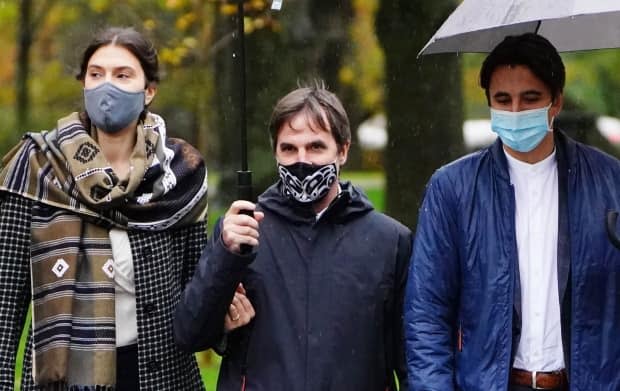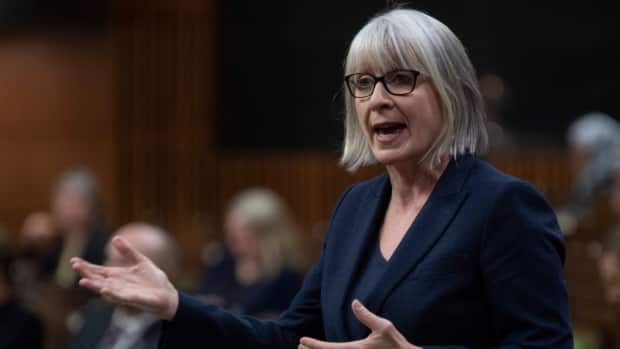With his cabinet picks, Trudeau signals he's a PM in a hurry

Justin Trudeau described his new cabinet Tuesday as "a team of familiar faces and new faces that are ready to put all their strengths, all their hard work toward delivering for Canadians in the coming years."
"Delivering" may be the key word here.
According to a senior Liberal source, the speed and urgency with which the government was able to operate while responding to the pandemic crisis led the prime minister to wonder whether the government could move faster and more ambitiously to deal with challenges like climate change and the housing shortage.
Even as COVID-19 slowly recedes, there's no shortage of issues that can or should be viewed as crises — not only climate change and housing but things like reconciliation, economic growth and failures of leadership within the Canadian Forces.
The clock is ticking
The government also may now assume it has two years to run before another election — which is both a decent amount of time to do some things and not a lot of time if you want or need to do a lot.
Every federal cabinet in history has been put together with the goal of actually getting a few things done. But if the demands of the moment are urgent — and if this government particularly needs to show it can make real progress — then the question is whether this is a cabinet built to deliver.
Viewed from that angle, Tuesday's announcement saw a number of intriguing moves.
Trudeau's first cabinet, unveiled six years ago on a sunny day, was conspicuously flashy — and not just because it established a new standard for gender parity. The health minister was a doctor, the finance minister was a CEO and the defence minister was a decorated soldier. The justice minister was an Indigenous lawyer. There was an astronaut.
One can debate how well that first cabinet worked out.
A team of familiar faces
Six years later, on a cold and rainy day, Trudeau unveiled a cabinet of people he has known for years (including friends and long-time associates like Mélanie Joly, Omar Alghabra, Marc Miller, Mark Holland, Dominic LeBlanc and Seamus O'Regan) and people he presumably trusts.
It's decidedly less flashy. There is no longer a minister of middle class prosperity. And even the astronaut is out — Marc Garneau is apparently scheduled to blast off to an overseas diplomatic appointment in the near future.
The flashiest, most 2015-like appointment on Tuesday was that of Steven Guilbeault, the celebrated environmental activist and Trudeau's new minister of the environment. That move may be exciting for environmental groups and the voters who would like to see the government move aggressively against climate change. But in terms of getting things done, it's also a gamble.

For one thing, Guilbeault's immediate predecessor — Jonathan Wilkinson — made steady progress on the government's policy goals while proving to be a smart and practical, though unexciting, communicator. For another, Guilbeault was nothing like that while serving as heritage minister. The fight over his signature legislative initiative was particularly loud, messy and ultimately unsuccessful.
Wilkinson is at least not going very far. As natural resources minister he could have a significant role to play in the government's climate agenda, presumably including the Liberal commitment to legislate emissions limits for the oil and gas industry.
After the prime minister himself made a mess with his unfortunate excursion to Tofino, the Indigenous reconciliation agenda is now in the hands of Miller (who replaces Carolyn Bennett as minister of Crown-Indigenous relations) and Patty Hajdu (who replaces Miller at Indigenous Services).

Miller, like Wilkinson, has seemed steady and effective — while Bennett recently faced calls for her resignation after she sent a taunting text message to Jody Wilson-Raybould. Hajdu has been criticized for her public handling of the pandemic, but the prime minister appears to have faith that she can handle a closely watched and high-stakes file that is all about delivery.
The mess at the Department of National Defence is now in the hands of Anita Anand, a former law professor who proved adept at handling the single most important file this government had over the last two years: vaccine procurement.
WATCH: Trudeau discusses appointment of new defence minister
The health file now belongs to an earnest economist, Jean-Yves Duclos, who was last in charge of overseeing the government's paperwork as president of the Treasury Board. The housing dilemma gets its own minister in Ahmed Hussen.
Meanwhile, responsibility for making legislative progress on any of these fronts will be shared by a new government House leader, Mark Holland. (Trudeau and Holland have known each other since they were both opposition MPs.)
"One of the things we saw very clearly in this election was that Canadians are expecting big things to be done by Parliament and by this government," Trudeau said Tuesday.
The pace of action during the pandemic likely was not sustainable and the federal response was not exactly a model of flawless execution. In their haste, for instance, the prime minister and his team walked right into the entirely avoidable WE affair. And the wisdom of some of the pandemic policies enacted — like the federal wage subsidy — will be debated for years.
But Trudeau's government is constantly chased — fairly or not — by claims that it hasn't amounted to much. As the subject line of a Conservative fundraising email put it on Tuesday afternoon, "Trudeau's cabinet = style over substance."
Trudeau bristles at such criticism. But any government that's been in office for six years has little room to sell itself on things like promise and symbolism — and a greater need to show that it's still delivering tangible results.
WATCH: Trudeau says he'll lead the Liberals into the next election
Trudeau was asked Tuesday whether he plans to lead the Liberal Party into the next election. He said yes, enthusiastically.
There really is only one way for a prime minister who isn't planning to quit tomorrow to answer that question. But regardless of who leads the Liberals into the next election, these next two years could prove pivotal to both the party's re-election hopes and this government's legacy.
The prime minister gave himself a month to pick this cabinet and he has given this cabinet another month to get ready for Parliament. By then, it will have few excuses for not hitting the ground running — and there will be a great pressure on it to deliver as Trudeau has promised.


